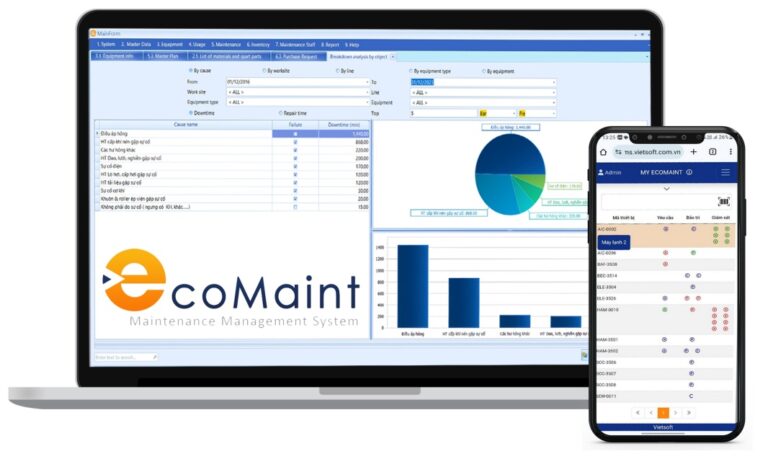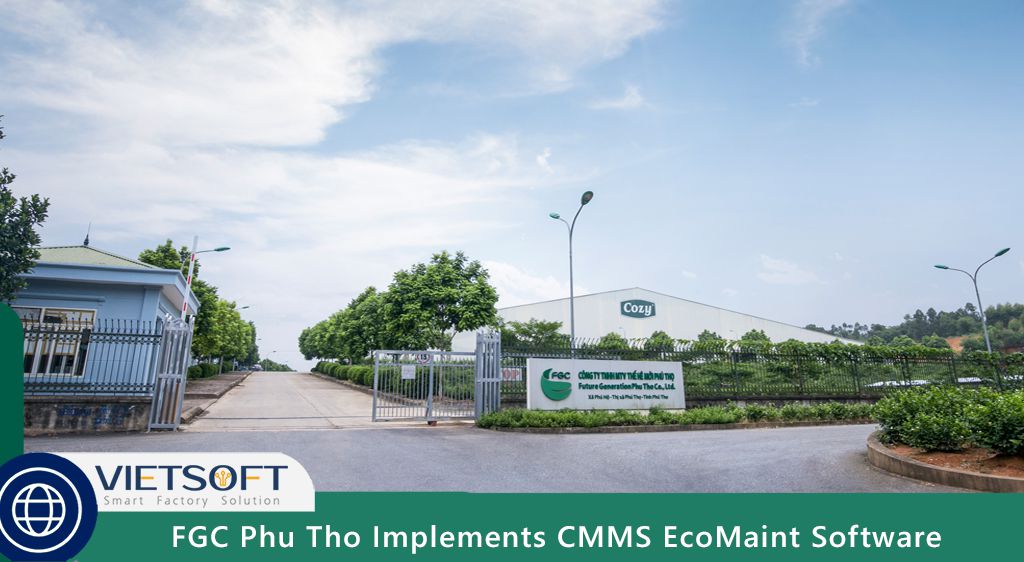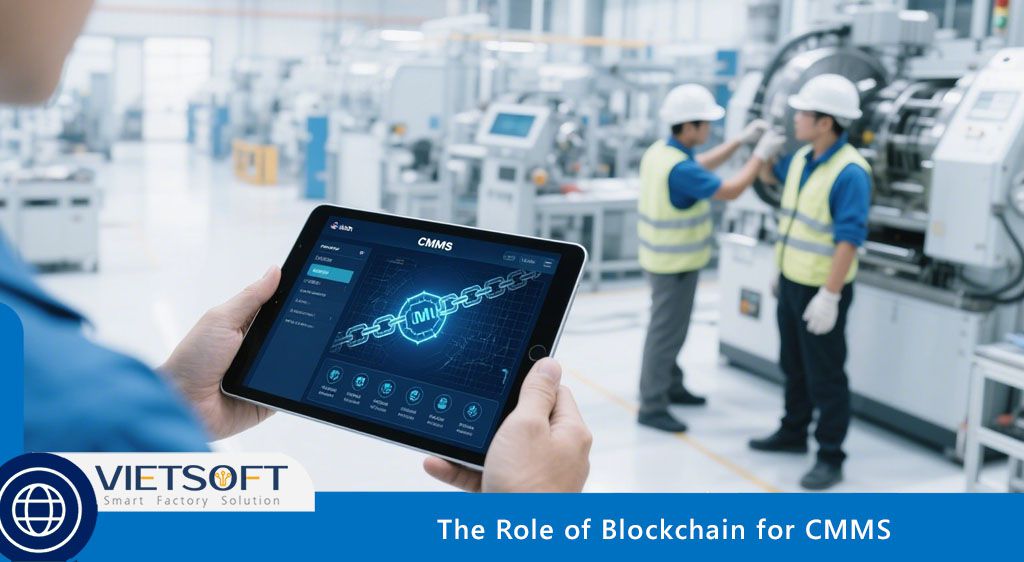
In the fast-evolving world of industrial maintenance, ensuring data integrity, compliance, and operational efficiency is more critical than ever. Imagine a maintenance manager facing a compliance audit, scrambling to retrieve reliable records from fragmented systems. The stakes are high—unreliable data can lead to costly fines, operational downtime, or even safety risks. Enter Blockchain for CMMS, a transformative technology that addresses these challenges by creating secure, transparent, and tamper-proof maintenance records. In this comprehensive guide, we’ll explore what Blockchain for CMMS is, its architecture, benefits, real-world applications, challenges, and future potential, all tailored for maintenance professionals seeking actionable insights.
I. What Is Blockchain for CMMS?
Blockchain for CMMS integrates blockchain technology with Computerized Maintenance Management Systems (CMMS) to enhance the security, transparency, and efficiency of maintenance operations. At its core, blockchain is a decentralized, tamper-proof digital ledger that records transactions in a secure and immutable way. When applied to CMMS, it ensures that every maintenance activity—from work order creation to asset retirement—is validated, securely stored, and accessible across multiple stakeholders without the risk of manipulation.
Think of it as a digital maintenance logbook stored across a network of secure computers, where each entry is verified by multiple trusted parties before being permanently recorded. This approach eliminates data silos, reduces errors, and builds trust in industries where compliance and accuracy are non-negotiable, such as manufacturing, aviation, and pharmaceuticals.
II. Why Blockchain Matters for Maintenance Teams
Maintenance teams face unique challenges: fragmented data across platforms, compliance pressures, and the need for real-time collaboration with vendors. Traditional CMMS systems, while effective, often struggle with data integrity and multi-party coordination. Blockchain for CMMS addresses these pain points by offering:
- Immutable Records: Every maintenance transaction is locked into a tamper-proof chain, ensuring audit-ready compliance.
- Enhanced Collaboration: Vendors, technicians, and managers access the same validated data, reducing disputes.
- Automation: Smart contracts streamline processes like work order generation and compliance checks.
Let’s dive into the architecture that makes this possible.
III. Architecture of Blockchain for CMMS
A blockchain-enabled CMMS operates through a layered architecture that integrates seamlessly with existing systems. Here’s a breakdown of the key components:
1. Smart Contracts: The Automation Engine
Smart contracts are self-executing programs stored on the blockchain that automate maintenance tasks. For example, if a sensor detects a motor overheating, a smart contract can instantly generate a work order, assign it to a technician, and order replacement parts—all without manual intervention. This reduces delays and human errors.
Example: In a manufacturing plant, a smart contract could monitor a conveyor belt’s runtime. After 1,000 hours, it automatically schedules maintenance and notifies the inventory team to prepare spare parts, ensuring zero downtime.
2. Distributed Ledger: The Secure Backbone
The blockchain network acts as a decentralized database, storing maintenance records across multiple nodes (computers). Each node holds an identical copy of the ledger, ensuring data availability even if one node fails. This distributed structure eliminates single points of failure and enhances security.
Practical Insight: For a pharmaceutical facility, this means maintenance logs for critical equipment like HVAC systems are always accessible and verifiable, simplifying regulatory audits.
3. Integration Layer: Bridging Old and New
The integration layer connects your existing CMMS to the blockchain network using APIs or middleware. This ensures you don’t need to overhaul your current system. Data from your CMMS—work orders, asset histories, or technician logs—syncs with the blockchain for enhanced security and transparency.
4. User Interface: Actionable Insights
The user interface is the dashboard where maintenance teams interact with the system. It displays verified data, such as work order statuses, asset performance trends, and compliance reports, all backed by the blockchain’s tamper-proof records.
IV. Key Benefits of Blockchain for CMMS
Adopting Blockchain for CMMS offers transformative advantages for maintenance teams. Here are six key benefits, grounded in real-world applications:
1. Immutable Maintenance Records
Blockchain creates a permanent, unalterable record of every maintenance activity, from work order creation to equipment decommissioning. This is invaluable for industries like aviation, where regulators demand detailed, tamper-proof logs. For instance, during an audit, a blockchain-based CMMS can instantly provide a verified history of a turbine’s maintenance, reducing compliance risks.
2. Streamlined Multi-Vendor Collaboration
Maintenance often involves multiple stakeholders—internal teams, external contractors, and suppliers. Blockchain ensures all parties access the same validated data, minimizing disputes over completed work or parts quality. For example, a factory in Hanoi collaborating with multiple vendors can use blockchain to track spare parts’ authenticity, ensuring compliance with safety standards.
3. Automated Compliance and Auditing
Smart contracts can monitor maintenance activities against regulatory requirements in real-time. If a piece of equipment deviates from compliance standards, the system flags it instantly and generates audit-ready reports. This eliminates manual documentation and reduces administrative overhead.
4. Enhanced Asset Lifecycle Management
Blockchain maintains a complete, tamper-proof history of an asset’s lifecycle—from procurement to disposal. This includes maintenance schedules, repair logs, and performance metrics. Such transparency aids warranty claims, resale negotiations, and lifecycle cost analysis. For instance, a company selling used machinery can provide buyers with verified maintenance histories, increasing asset value.
5. Cost Savings Through Transparency
By creating a single source of truth, blockchain eliminates redundant data and prevents fraudulent maintenance claims. This ensures accurate budgeting and reduces unnecessary repairs. A study by IBM found that blockchain-based maintenance systems can reduce administrative costs by up to 20% in complex operations.
6. Tamper-Proof Warranty Logs
In regulated industries, warranty disputes often arise due to altered or incomplete service logs. Blockchain ensures that warranty data—service history, parts replacements, and usage conditions—remains immutable and verifiable, reducing disputes and ensuring compliance.
V. Real-World Applications of Blockchain for CMMS
Blockchain for CMMS is not a futuristic concept—it’s already transforming maintenance operations across industries. Here are practical applications, tailored to the needs of maintenance professionals:
1. Supply Chain Management for Spare Parts
Ensuring the authenticity of spare parts is critical in industries like automotive and aerospace. Blockchain enables end-to-end traceability, recording a part’s journey from manufacturer to installation. For example, a Vietnamese factory can verify that a replacement valve meets safety standards, reducing the risk of equipment failure.
2. Predictive Maintenance with IoT Integration
By combining blockchain with IoT sensors, CMMS systems can monitor equipment in real-time and store performance data securely. For instance, a pump’s vibration and temperature data can be recorded on the blockchain, enabling predictive maintenance algorithms to forecast failures. This approach minimizes downtime and extends equipment lifespan.
3. Workforce Management and Incentives
Blockchain can track technician performance, such as completed tasks or maintenance quality, and reward them with tokenized incentives. In Vietnam, where performance-based rewards are gaining traction, this fosters accountability and boosts morale. For instance, a technician completing a critical repair on time could earn tokens redeemable for bonuses or training opportunities.
4. Regulatory Compliance and Quality Control
Blockchain’s transparency simplifies compliance with strict regulations. By storing quality control data on an immutable ledger, manufacturers can reduce product recalls and ensure adherence to standards. For example, a pharmaceutical plant can use blockchain to track sterilization processes, ensuring compliance with FDA or local regulations.
VI. Implementing Blockchain for CMMS: A Step-by-Step Guide
Transitioning to a blockchain-enabled CMMS requires careful planning. Here’s an eight-step process to ensure success:
1. Assess Current CMMS Gaps
Identify pain points in your existing system, such as data silos or compliance issues. Document baseline metrics to measure improvement.
2. Define Use Cases
Focus on high-impact areas like compliance automation or multi-vendor coordination where blockchain adds immediate value.
3. Select a Blockchain Platform
Choose platforms like Hyperledger Fabric or VeChain, designed for industrial applications, and ensure compatibility with your CMMS and ERP systems.
4. Design Smart Contracts
Develop automated workflows for tasks like work order approvals or parts ordering. Test rigorously to avoid errors.
5. Establish Governance
Define network participants, data privacy policies, and access controls to comply with industry regulations.
6. Integrate Systems
Use APIs to connect your CMMS with the blockchain, ensuring seamless data flow without disrupting operations.
7. Train Your Team
Educate technicians and managers on the system’s benefits, focusing on usability rather than technical complexity.
8. Pilot and Scale
Start with a small-scale pilot on non-critical assets, monitor performance, and gradually expand implementation.
VII. Challenges and Mitigation Strategies
While Blockchain for CMMS offers significant benefits, implementation comes with challenges. Here’s how to address them:
1. Technical Complexity
Blockchain requires specialized expertise, which can be daunting for small businesses. Solution: Partner with blockchain-as-a-service providers like IBM or Microsoft Azure, which offer pre-built solutions and integration support.
2. Scalability Issues
High-volume maintenance operations may face delays due to blockchain’s processing limitations. Solution: Use layer-2 solutions or hybrid architectures that combine blockchain security with traditional database performance.
3. User Resistance
Teams may resist adopting new processes. Solution: Provide comprehensive training, highlight tangible benefits (e.g., reduced paperwork), and implement changes gradually.
4. Regulatory Uncertainty
Blockchain regulations are still evolving. Solution: Work with legal experts and join industry consortia to stay updated on standards and compliance requirements.
VIII. The Future of Blockchain for CMMS
The future of Blockchain for CMMS is bright, with emerging technologies amplifying its potential:
- AI and IoT Integration: Combining blockchain with AI and IoT will enable digital twins—virtual models of assets that use real-time data for predictive maintenance. For example, a wind turbine’s digital twin could predict blade wear based on blockchain-verified sensor data.
- Tokenized Incentives: Blockchain can gamify maintenance by rewarding technicians for timely, accurate reporting, fostering a culture of accountability.
- Industry Consortia: Companies can join maintenance data consortia to benchmark performance while maintaining confidentiality, protected by advanced cryptography.
- Autonomous Maintenance: AI-driven smart contracts could make real-time maintenance decisions, such as rerouting production to avoid downtime during repairs.
IX. How CMMS EcoMaint Leverages Blockchain
To fully harness Blockchain for CMMS, businesses need a robust platform like CMMS EcoMaint, developed by Vietsoft, a trusted name in Vietnam’s maintenance software industry for over 20 years. EcoMaint seamlessly integrates with blockchain technology to streamline asset management, automate compliance, and ensure spare parts traceability. Whether you’re tracking equipment lifecycles or coordinating with vendors, EcoMaint transforms blockchain’s potential into practical, measurable results.
Curious about how CMMS EcoMaint can elevate your maintenance operations with blockchain? Discover the CMMS EcoMaint solution here.
Contact us for consultation via hotline: 0986778578 or email: sales@vietsoft.com.vn.
X. Conclusion: A New Era of Maintenance Management
Blockchain for CMMS is more than a technological upgrade—it’s a paradigm shift toward transparent, efficient, and data-driven maintenance. By ensuring tamper-proof records, automating compliance, and fostering collaboration, blockchain empowers maintenance teams to reduce costs, extend asset lifespans, and meet regulatory demands. In Vietnam’s rapidly growing industrial sector, adopting this technology positions businesses at the forefront of innovation.




